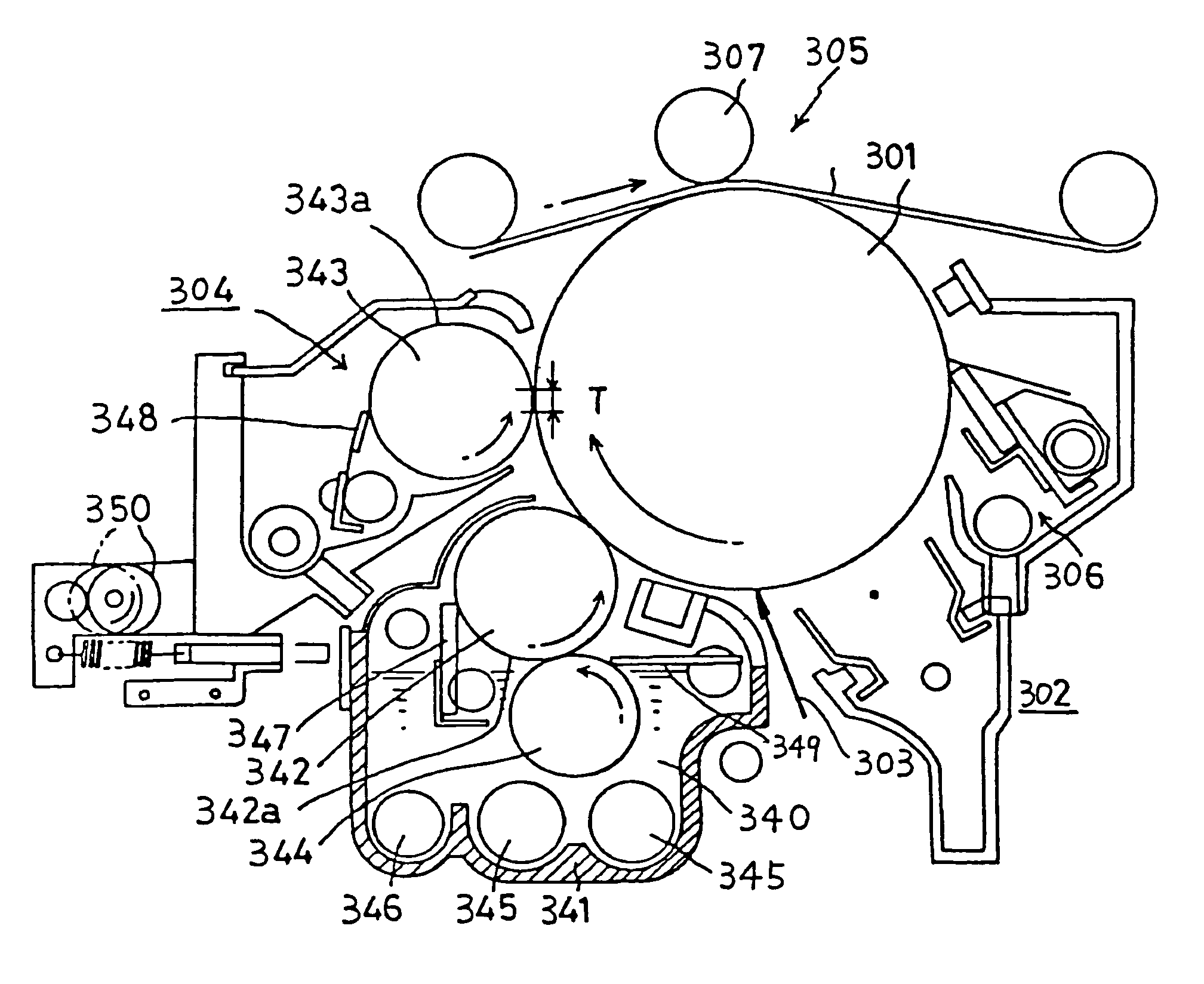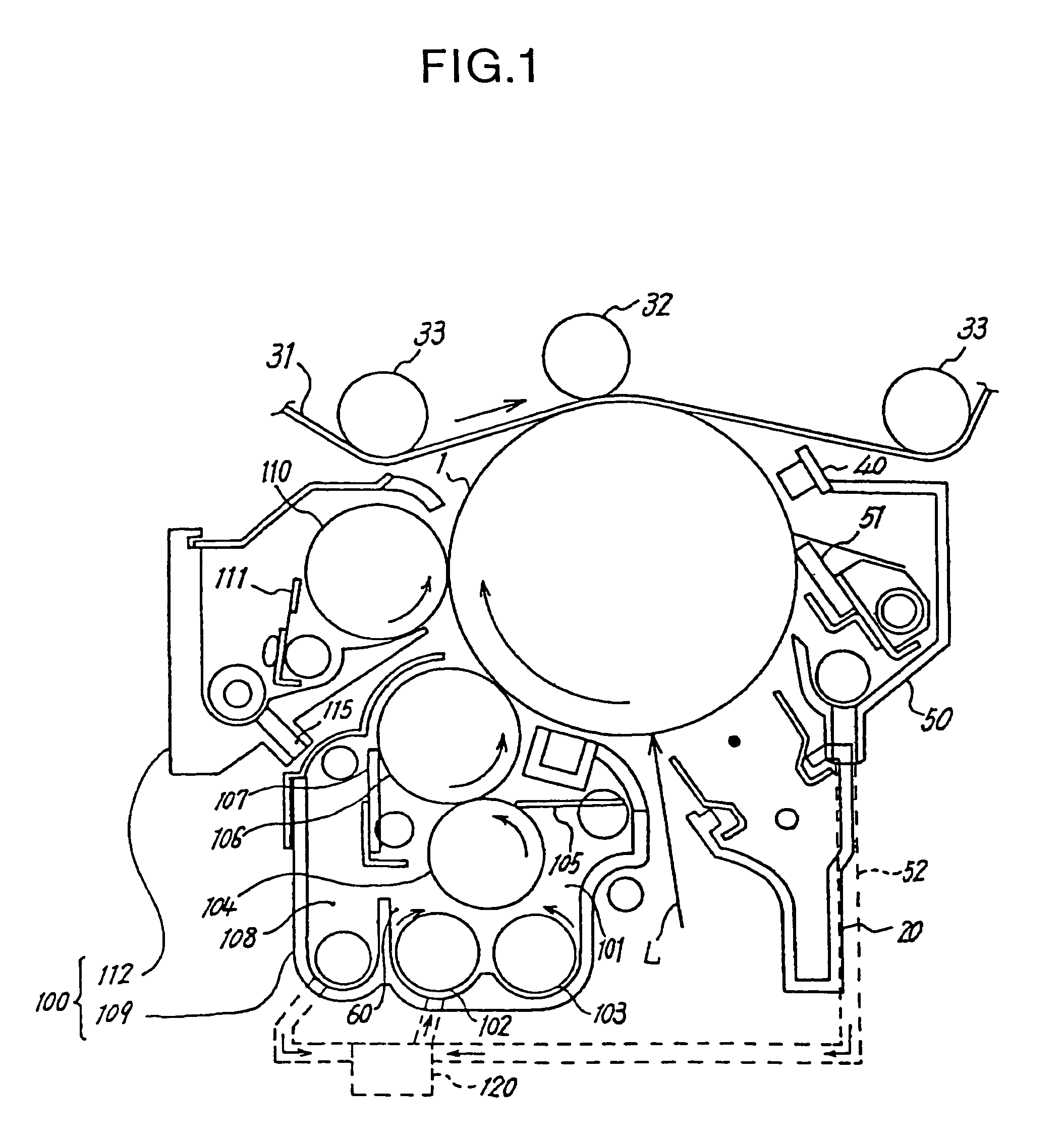Liquid image formation apparatus and liquid developing device
a technology of liquid image and developing device, which is applied in the direction of electrographic process apparatus, instruments, optics, etc., can solve the problems of image fog caused by excess toner, and excess toner may not be fully removed
- Summary
- Abstract
- Description
- Claims
- Application Information
AI Technical Summary
Benefits of technology
Problems solved by technology
Method used
Image
Examples
first embodiment
[0076]FIG. 1 schematically shows the key section of a printer according to a In this figure, the printer comprises the charger 20, exposing device, not shown, that irradiates exposure light L to the photoreceptor drum 1, wet-type developing device 100, transfer device composed of the intermediate transfer belt 31 and transfer roller 32, discharge lamp 40, and the drum cleaning device 50, each of which is disposed around the photoreceptor drum 1 as a latent image carrier.
[0077]The surface of the photoreceptor drum 1 is formed of amorphous silicon (a-Si), and is driven to rotate in the direction of the arrow in the figure by a driving unit, not shown, during printing. The photoreceptor drum 1 whose surface is formed of the amorphous silicon (a-Si) exhibits more excellent mechanical strength than that of an organic photoconductor (OPC), prolongs its life, and enhances the level of safety.
[0078]The charger 20 uniformly charges the surface of the photoreceptor drum 1 driven to rotate in...
second embodiment
[0126]FIG. 7 is a schematic diagram showing this invention in which the developing device according to this invention is applied to an electrophotographic copier as an example of the image formation apparatus.
[0127]In FIG. 7, the legend 201 represents the photoreceptor drum as a latent image carrier. There are the charger 202, developing roller 242, sweep roller 243, and the transfer device 205, which are successively disposed around the photoreceptor drum 201 in its rotating direction. The cleaning device 206 is disposed between the transfer device 205 and the charger 202, and the exposing device 203 is disposed between the charger 202 and the developing roller 242.
[0128]The developing roller 242 is brought into contact with the photoreceptor drum 201 with a predetermined pressure during use, and a prescribed nip width is formed between the photoreceptor drum 201 and the developing roller 242.
[0129]Although amorphous silicon is used here as a material of the photoreceptor drum 201,...
third embodiment
[0172]The developer 340 used in the image formation apparatus of the third embodiment is not the liquid developer of low viscosity (about 1 cSt) and low concentration (about 1%) based on conventionally available Isopar (trademark of Exxon) as a carrier, but is a highly viscous and highly concentrated liquid developer. The developer 340 to be used is any developer having a viscosity within a range from 50 cSt to 5000 cSt and a concentration within a range from 5% to 40%. The carrier liquid to be used is any of highly insulating liquid carriers such as silicone oil, normal paraffin, Isopar M (trademark: Exxon), vegetable oil, or mineral oil. It is possible to select volatility or non-volatility for any purpose. The toner particles range in size from submicrons to about 6 μm, and any particle size can be selected in accordance with each purpose.
[0173]The developing device 304 as characteristics of the third embodiment will be explained below. As shown in FIG. 12, the developing device ...
PUM
 Login to View More
Login to View More Abstract
Description
Claims
Application Information
 Login to View More
Login to View More - R&D
- Intellectual Property
- Life Sciences
- Materials
- Tech Scout
- Unparalleled Data Quality
- Higher Quality Content
- 60% Fewer Hallucinations
Browse by: Latest US Patents, China's latest patents, Technical Efficacy Thesaurus, Application Domain, Technology Topic, Popular Technical Reports.
© 2025 PatSnap. All rights reserved.Legal|Privacy policy|Modern Slavery Act Transparency Statement|Sitemap|About US| Contact US: help@patsnap.com



